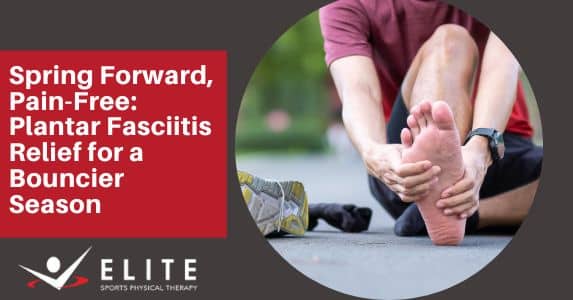Spring bursts forth with vibrant colors, blooming flowers, and the irresistible urge to get outside. But for those suffering from plantar fasciitis, the joy of spring can be dampened by heel pain. This foot condition shouldn’t sideline you from enjoying the season. Here’s a guide to understanding plantar fasciitis, along with spring-inspired tips for relief and a return to pain-free movement.
What is Plantar Fasciitis?
Plantar fasciitis is a common foot condition characterized by inflammation of the plantar fascia. Imagine a tight band of tissue running along the bottom of your foot, connecting your heel to your toes and supporting your arch. It typically manifests as a sharp stabbing pain in the heel, especially during the first steps in the morning or after periods of inactivity. Pain may subside after activity, but increases later in the day or after prolonged standing.
Why Does Spring Bring Plantar Fasciitis Troubles?
Spring often coincides with more activity. With the warmer weather, we trade in our winter boots for lighter shoes, head out for more walks, and maybe even dust off our running shoes. A sudden increase in activity like running, walking, jumping, or even prolonged standing can cause tiny tears in the plantar fascia, leading to inflammation and pain.
Spring Shoe Savvy: Choosing Footwear for Plantar Fasciitis Relief
Not all spring shoes are created equal for plantar fascia sufferers. Here are some tips for choosing footwear that supports your feet and promotes healing:
- Arch Support: Look for shoes with built-in arch support. This helps distribute weight evenly across your foot, taking pressure off the plantar fascia. Consider arch inserts for shoes that lack built-in support.
- Cushioning: Opt for shoes with good shock absorption, especially in the heel area. This helps minimize impact on your feet during activities.
- Flexibility: Choose shoes with a flexible forefoot that allows for natural movement and reduces strain on the plantar fascia.
- Heel Height: Avoid high heels or shoes with minimal soles. A moderate heel height (around 1 inch) can provide some support and comfort.
Spring into Stretches: Exercises for Plantar Fasciitis
Stretching is crucial for managing and preventing plantar fasciitis. Here are some gentle stretches you can incorporate into your routine, perfect for a cool spring morning:
- Calf Stretch: Stand facing a wall, arms shoulder-width apart, and one leg extended back. Keeping your heel flat on the ground, lean into the wall until you feel a stretch in your calf. Hold for 30 seconds, repeat with the other leg.
- Plantar Fascia Stretch: Sit with a towel wrapped around the ball of your foot. Gently pull the towel towards you, flexing your foot back. Hold for 30 seconds, repeat 3 times on each foot.
- Tennis Ball Massage: Sit in a chair and roll a tennis ball under your foot, applying gentle pressure to massage the plantar fascia and loosen tight areas.
Embrace the Fresh Spring Grass
Walking barefoot on soft surfaces like dewy grass can feel incredibly refreshing on a spring morning. While not always practical, briefly walking barefoot on soft surfaces can help stretch and strengthen the plantar fascia. However, if prolonged barefoot walking aggravates your pain, check in with your physical therapist for support.
Physical Therapy: Your Solution for Plantar Fasciitis
A physical therapist will conduct a thorough evaluation to identify the underlying causes of your pain, whether it’s tight calf muscles, poor foot mechanics, or muscle weakness. They will create a personalized treatment plan that may include stretching exercises to improve flexibility, strengthening exercises to support your arch, and manual therapy techniques to reduce inflammation. Additionally, they’ll provide guidance on proper footwear, activity modifications, and pain management strategies. By addressing the root causes of your plantar fasciitis and equipping you with self-management tools, physical therapy empowers you to achieve long-lasting pain relief and return to your favorite activities without limitations.
If you’re in Central Texas and the Waco or Clifton areas, call today and make an appointment with our therapists. Contact Elite Sports Physical Therapy today.

